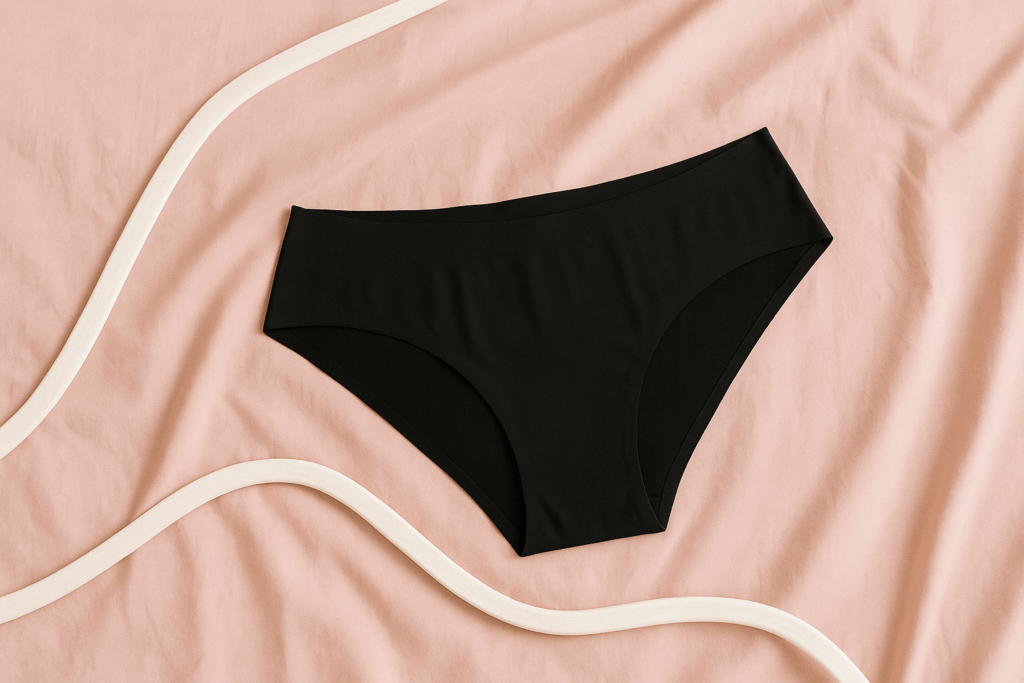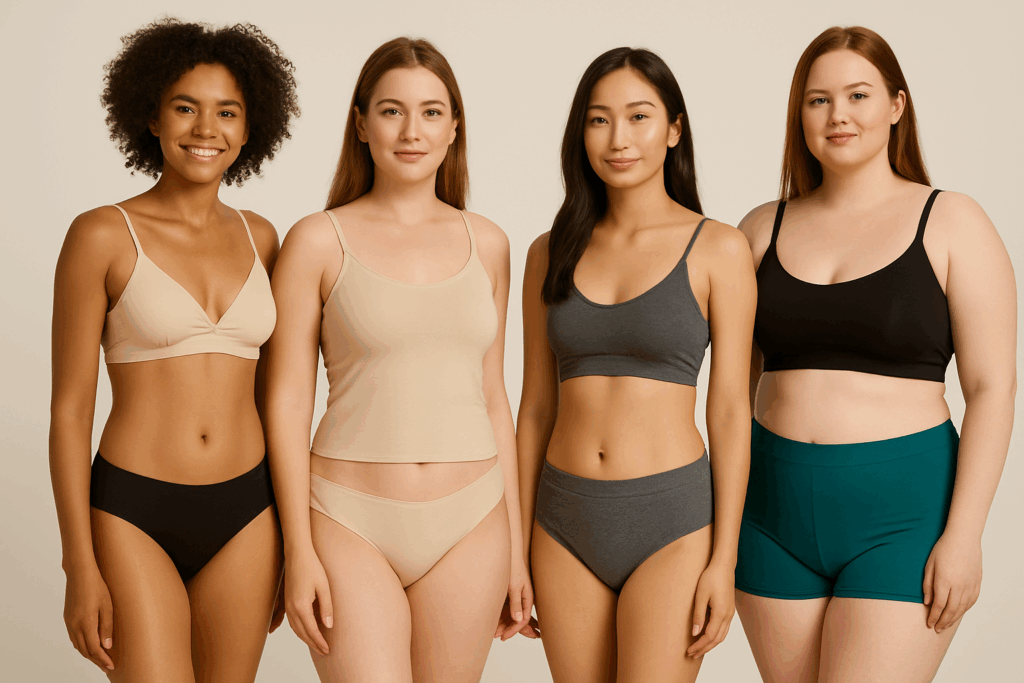When it comes to underwear, comfort, fit, and performance are top priorities. Women’s microfiber underwear, especially those designed with moisture-wicking capabilities, are making waves for ticking all these boxes — and then some. But what exactly sets these fabrics apart? And why are they becoming the go-to choice for so many women? Let’s dive in and unpack the science, benefits, and practical tips you need to know, so you can make the best choice for your everyday comfort and lifestyle.

What You Need to Know About Microfiber Underwear and How They’re Made
Understanding microfiber underwear means starting at the fabric itself. Microfiber refers to synthetic fibers thinner than one denier, literally finer than a strand of silk [1]. This ultra-fine construction allows microfiber fabric to feel incredibly soft against the skin while being remarkably durable.
What Is Microfiber Fabric and Why It Matters for Underwear
Microfibers are typically made from polyester, nylon, or a blend, engineered to have a smooth profile and tiny, almost invisible strands. This design creates fabric that’s lightweight with high surface area, so it excels at moisture management.
Why does that matter? Well, your skin is sensitive, and traditional fabrics like cotton, although breathable, can trap sweat during intense activity or hot days. Microfiber fabric’s fine weave pulls moisture away quickly and evaporates it faster, keeping your skin dry and irritation-free [2].
Beyond moisture management, microfiber’s silky texture helps underwear glide smoothly over skin, reducing friction and discomfort — a complete game changer for daily wear or workouts.
How Microfiber Underwear Is Manufactured for Comfort and Performance
Microfiber textile production uses sophisticated spinning techniques and weaving processes to ensure fibers stay intact and aligned for premium softness. Some manufacturers add stretch fibers like elastane, giving the underwear flexibility and shape retention [3].
The construction also matters. Seamless designs or flatlock seams can minimize chafing. Waistbands crafted with soft, wide elastic provide snug comfort without digging in. These attention-to-detail manufacturing choices make microfiber underwear not just performance wear but truly comfortable essentials you’ll want on every day.
Now that we’ve set the groundwork on what microfiber is and how it’s made, let’s explore why it’s such a beneficial fabric choice.
Key Benefits of Choosing Microfiber Underwear for Women
Choosing underwear involves more than just looks — comfort, durability, and health play huge roles. Microfiber underwear checks these boxes with flying colors.
How Microfiber Enhances Comfort and Provides a Perfect Fit
Thanks to its fine fibers, microfiber fabric is naturally soft and light. It contours smoothly to your body without bunching or riding up, helping underwear maintain shape all day. The fabric’s ability to stretch and recover ensures it snugly fits various body types, adapting to your movements whether you’re sitting, walking, or exercising [4].
Many women notice less irritation or “pinching” compared to thicker, rougher fabrics. This subtle comfort difference can improve your overall confidence and wellbeing — because no one wants to constantly adjust their underwear during a busy day!
The Importance of Moisture-Wicking and Breathability in Everyday Wear
Sweat is inevitable, but trapped moisture isn’t. Microfiber’s moisture-wicking ability helps pull sweat away from skin and distributes it across the fabric surface to evaporate quickly. This breathability protects against bacterial growth and irritations common with damp underwear [5].
Especially in hotter months or during workouts, microfiber underwear keeps you feeling fresh and dry, reducing risks of yeast infections or rashes that can come from staying damp too long.
Durability of Microfiber Underwear and Why They Are Easy to Care For
Another perk? Microfiber fabrics tend to resist stretching out, pilling, and shrinkage better than many natural fibers. This durability means your underwear maintains fit and appearance longer, even after many washes [6].
Washing is simple, too. A gentle cycle with cold water preserves the fabric’s structure, and quick drying means they’re ready to go again fast. This easy care suits busy lifestyles without sacrificing quality or comfort.
Feeling good about microfiber’s benefits? Let’s see how it stacks up against some traditional fabrics.
How Microfiber Compares to Other Underwear Fabrics
With so many fabrics available—from cotton to blends of synthetic fibers—you might wonder how microfiber fits into the landscape.
Differences Between Microfiber and Cotton Underwear for Everyday Use
Cotton is the classic go-to for underwear — it’s natural, breathable, and soft. But cotton absorbs moisture rather than wicking it away, which can leave you feeling damp during active days or hot weather [7]. Plus, cotton tends to stretch and lose shape faster.
Microfiber, by contrast, excels at moisture management, maintains shape, and is lighter and smoother against the skin. For women with active lifestyles or sensitive skin, microfiber can offer superior comfort [2].
Comparing Microfiber with Other Synthetic Blends: What Sets It Apart
Compared to other synthetics like spandex or nylon alone, microfiber’s ultra-fine fibers provide a softer feel and better breathability. Its dense yet lightweight weave balances durability with a smooth hand-feel — a key factor in underwear that feels luxurious yet practical [3].
Importantly, microfiber blends often incorporate stretch yarns thoughtfully to ensure underwear moves naturally with your body without constriction.
When Microfiber Underwear Is the Best Choice Over Other Materials
If you prioritize moisture management, durability, and a “barely there” feel, microfiber underwear is the way to go. They’re particularly beneficial for:
- Women with sensitive or reactive skin
- Those who live active lifestyles or exercise often
- Individuals seeking underwear that lasts without frequent replacement
Cotton might still be preferred for low-activity or colder seasons, but microfiber stands out for all-around performance year-round.
Alright, moving on — knowing what style and fit works best can take comfort up a notch.
Finding the Right Microfiber Underwear for Your Body and Lifestyle
The best underwear matches your body shape and your day-to-day activities. Thankfully, microfiber offers flexibility across many styles and features.
Popular Styles and Cuts Designed for Women’s Comfort and Activity
From classic briefs to boyshorts and seamless thongs, microfiber fabrics are adapted into a range of cuts. For active days, look for designs with:
- Wider coverage for gentle support
- Seamless or flat-stitched seams to minimize irritation
- A flexible waistband that won’t pinch or roll
For lounging or sleep, softer cuts with breathable mesh panels can maximize comfort.

Features to Look for in Microfiber Underwear: Seams, Waistband, and Stretch
A smooth, flat seam profile is crucial to avoid visible lines and skin irritation. Waistbands should be breathable elastic with enough stretch for snugness but not tightness.
Stretch content matters — microfiber blended with around 5–10% elastane allows underwear to move naturally without losing shape. This elasticity supports a custom-like fit and keeps underwear feeling fresh day after day [6].
Tips for Choosing the Best Size and Fit to Maximize Comfort
Don’t get hung up on labeling sizes. Since microfiber underwear stretches, focus on fit by:
- Trying different brands (size can vary)
- Looking for underwear that feels snug but doesn’t pinch or bind
- Avoiding sizes that ride up or dig into skin, which can cause friction
Remember, a well-fitted underwear feels like a gentle embrace — not a squeeze.
Next up, caring properly for microfiber fabric ensures your investment lasts longer.
How to Properly Care for Your Microfiber Underwear to Extend Their Lifespan
Microfiber’s durability can be easily maintained with mindful care habits.
Best Washing Practices to Keep Microfiber Fabric Performing Well
Wash microfiber underwear with cold water on a gentle cycle. Avoid bleach or fabric softeners, which can break down fibers and reduce moisture-wicking performance.
Use a mild detergent, and if possible, wash underwear in a mesh bag to prevent snagging. This keeps fibers intact and maximizes softness.
Recommended Drying and Storage Tips to Preserve Fabric Quality
Microfiber dries quickly, so tumble drying on low or air drying is best. High heat can damage fibers and elastic.
Store underwear flat or gently folded to avoid stretching the waistband. Keeping them in a well-ventilated drawer will prevent moisture buildup and odors.
These simple steps will keep your microfiber underwear looking and feeling new for many months.
Clearing Up Common Questions and Misconceptions About Microfiber Underwear
Finally, let’s address some concerns many women share about microfiber underwear.
Is Microfiber Truly Breathable and Comfortable for Sensitive Skin?
Yes! Despite being synthetic, microfiber’s fineness creates excellent breathability and softness. Studies show microfiber fabrics allow sufficient air flow and drying, helping prevent skin irritation often caused by dampness or friction [2][5].
For sensitive skin, microfiber underwear is often recommended over rougher fabric options.
Environmental Impact: Understanding if Microfiber Underwear Is Eco-Friendly
This is a hot topic. Microfibers can shed tiny plastic fibers during washing, contributing to pollution [8]. However, advances in fabric technology and washing filters are reducing this impact.
If sustainability is a priority, look for brands using recycled fibers or innovations reducing microfiber release. Washing with proper filters and gentle cycles also helps decrease environmental footprint.
Addressing Allergies and Fabric Sensitivities Related to Microfiber Use
Microfiber is typically hypoallergenic and less likely to cause contact dermatitis compared to some natural materials, which may contain irritants or allergens from dyes or processing chemicals [9]. If you have specific sensitivities, choosing undyed or low-chemical production microfiber underwear is a solid route.
If irritation occurs, switching fabrics or styles and consulting a dermatologist is always wise.
Alright, now you’re armed with the knowledge to choose the best microfiber underwear that meets your comfort, performance, and lifestyle needs. Soft, breathable, durable — microfiber truly is a subtle upgrade you’ll appreciate every day.
